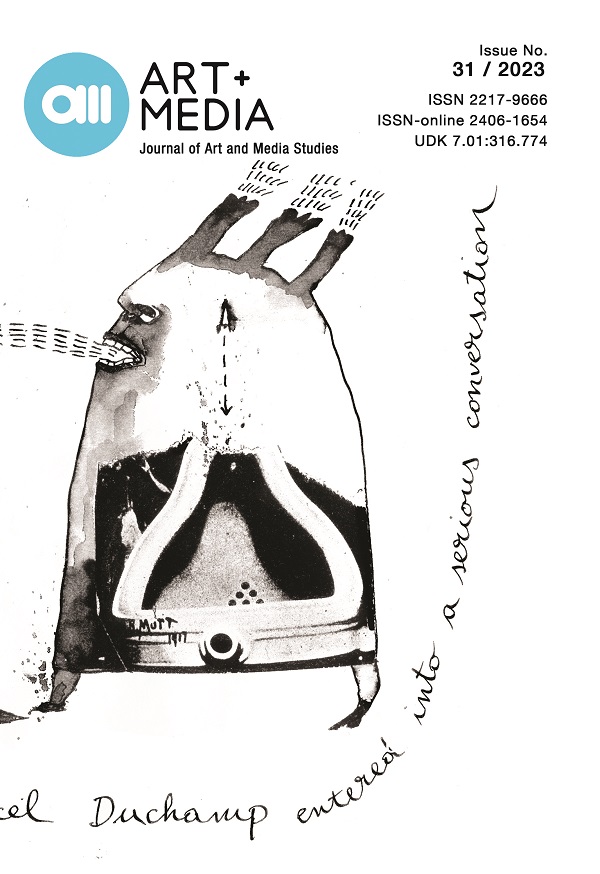Lost Architecture Remodeling: An Iconographic Reading
DOI:
https://doi.org/10.25038/am.v0i29.567Keywords:
iconography; miniature model; medieval architecture.Abstract
In the Middle Ages, images had useful functions, particularly among illiterates. In holy places pictorial representations helped to instruct illiterates, making them understand the stories that were represented, recognize the Saints, and perceive the meaning of their attributes. The representation of a miniature model of a church associated with a saint often denotes that he had erected holy places as symbols of the ‘building up’ of the Church through the Doctrine and his own theological writings. A model of a town often refers to the town where the church holding the painting was located. A miniature model of a medieval town is usually offered to the Virgin by the patron saint of the city which is represented. This article intends to illustrate how the representation of an architectural miniature model, as the main attribute of a saint in medieval iconography, has influenced the process of remodeling lost architectures that have changed shape over the centuries due to reconstruction or restoration. Architectural miniature models, represented as an iconographic attribute of a saint, are shown in numerous 14th to 15th century paintings. The usefulness of a maquette, in remodeling both the aspect and the style of a structure, is underlined by impressively precise architectural details which characterize the suggestive and eloquent examples of maquette examined in this study.
References
Allen, Joanne. Transforming the Church Interior in the Renaissance Florence. Cambridge: Cambridge University Press, 2022. DOI: https://doi.org/10.1017/9781108985659
Bietti, Monica. “Dal Savonarola al pontificato di Leone X: artisti e patroni in San Pier Maggiore a Firenze.” In Nello splendore mediceo: Papa Leone X e Firenze, edited by Nicoletta Baldini and Monica Bietti, 127–137. Livorno: Sillabe, 2013.
Buonsignori, Stefano. Map of Florence. Florence, 1584.
Buschmann, Paul. “Carlo Crivelli e le sue opere alla ʻNational Galleryʼ di Londra.” Emporium 13, 77 (May 1901): 323–338.
Camelliti, Vittoria. “Tradizione e innovazione nell’iconografia dei santi patroni marchigiani tra Medioevo e Rinascimento.” In Santi, patroni, città: immagini della devozione civica nelle Marche, edited by Mario Carassai, 71–119. Ancona: Quaderni del Consiglio Nazionale delle Marche 132, 2013.
Cantalamessa, Giulio. “Artisti veneti nelle Marche.” Nuova Antologia 41, 19 (October 1892): 401–431.
Cooper, Donal. “Firenze scomparsa: le chiese di Santa Chiara e San Pier Maggiore e la loro ricostruzione digitale presso i musei di Londra.” Archeologia e Calcolatori 10 (2018): 67–80.
Dal Piaz, Vittorio. “La storia e l’architettura della Cappella.” In The Scrovegni Chapel in Padua, Essays, edited by Davide Banzato, Giuseppe Basile, Francesca Flores d’Arcais, and Anna Maria Spiazzi, 19–66. Modena: Franco Cosimo Panini, 2005.
Fabiani, Giuseppe. “Aspetti della città.” In Vita Pubblica e Privata, Vol. 1 of Ascoli nel Quattrocento. Ascoli: Società Tipolitografica Editrice, 1950.
Fabiani, Giuseppe. “Carlo Crivelli e Pietro Alemanno.” In Artisti Monumenti e Opere d’Arte, Vol. 2 of Ascoli nel Quattrocento. Ascoli: Società Tipolitografica Editrice, 1951.
Favini, Vieri, and Savorelli, Alessandro. “I santi ʻvessilliferiʼ. Patroni e araldica comunale.” In Santi, patroni, città: immagini della devozione civica nelle Marche, edited by Mario Carassai, 15–70. Ancona: Quaderni del Consiglio Nazionale delle Marche 132, 2013.
Foscari, Antonio and Tafuri, Manfredo. L’armonia e i conflitti: la chiesa di San Francesco della Vigna nella Venezia del ‘500. Torino: Einaudi, 1983.
Frugoni, Chiara. A Distant City: Images of Urban Experience in the Medieval World. Princeton: Princeton University Press, 1991.
Giorgi, Daniele. “La colomba di Giotto: forma e funzione della cappella degli Scrovegni.” Studi di Memofonte 23 (2019): 1–53.
Lightbown, Ronald. Carlo Crivelli. New Haven and London: Yale University Press, 2004.
Orofino, Giulia. “Il ʻComune dei santiʼ. L’iconografia dei patroni nei libri cittadini.” In Forme e modelli della santità in Occidente dal tardo antico al medioevo, edited by Massimiliano Bassetti, Antonella Degl’Innocenti and Enrico Manestò, 159–199. Spoleto: Fondazione Centro italiano di Studi sull’Alto Medioevo, 2012.
Romano, Serena. Giotto’s O. Roma: Viella, 2008.
Downloads
Published
How to Cite
Issue
Section
License
Copyright (c) 2023 AM Journal of Art and Media Studies

This work is licensed under a Creative Commons Attribution 4.0 International License.
The content on this site is licensed under a Creative Commons Attribution 4.0 International License.
AM Journal of Art and Media Studies ISSN 2217-9666 - printed, ISSN 2406-1654 - online, UDK 7.01:316.774
Contact: amjournal@outlook.com
Publisher: Faculty of Media and Communications, Singidunum University, Belgrade, Serbia
Indexed in: ERIH PLUS, EBSCO, DOAJ, and in The List of Scientific Journals Categorization of Ministry of Education, Science and Technological Development of Republic of Serbia (M24 in 2021; M23 in 2023). Beginning with No. 12 2017, AM is indexed, abstracted and covered in Clarivate Analytics service ESCI.

